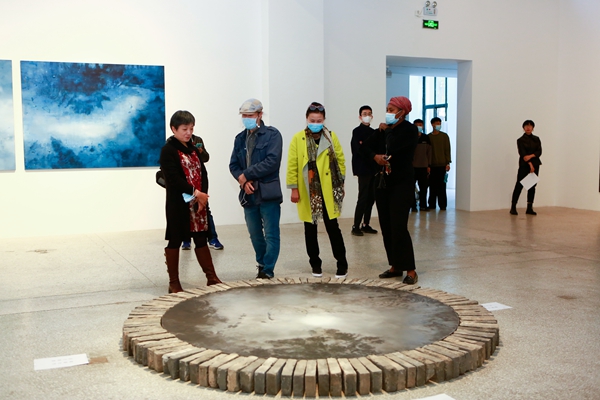Picturing wonderland

A part of The Wonderland, large-scale oil paintings by Ye, is placed on the ground as an installation.
"Chinese artists of my generation all experienced a similar cultural impact. For me, my paintings are a compromise with myself, struggling to find a balance between the two cultures," says the 48-year-old.
Ye's works employ oil and water-the Western medium-to depict landscape paintings, a common genre in Chinese ink painting. They have no vivid images, only vague, natural outlines shrouded in mist.
Growing up in Ningbo-a city with a rich variety of flora-he is inspired by nature, as well as the rainy and foggy days in his hometown.
Ye has done a lot of research on paintings from the Song Dynasty (960-1279), a peak period for Chinese landscape painting. Similar to painters of that time, who tried to build a spiritual world via landscape painting, Ye says he also wants to create a utopia to escape the urban lifestyle in which we are bombarded by videos, pictures and information from numerous sources in all directions.
Keeping a close eye on Chinese contemporary art since the 1980s, organizer of Ye's solo show, Yukihito Tabata, says that the landscapes painted by Eastern artists never replicate the physical subject as perceived by the eyes, but interpret the spiritual meaning.
"Ye successfully delineated a spiritual homeland in accordance with the Eastern ideal," he adds.
Ye is an associate professor at the mural department of the Central Academy of Fine Arts in Beijing. His studies on ancient frescos also affect his creations. For instance, his works are always done on a large scale.

 Print
Print Mail
Mail
 20 Cultural Symbols
20 Cultural Symbols Why Zhejiang
Why Zhejiang Experiencing high-tech products at WIC
Experiencing high-tech products at WIC Zhejiang Release
Zhejiang Release Zhejiang News
Zhejiang News